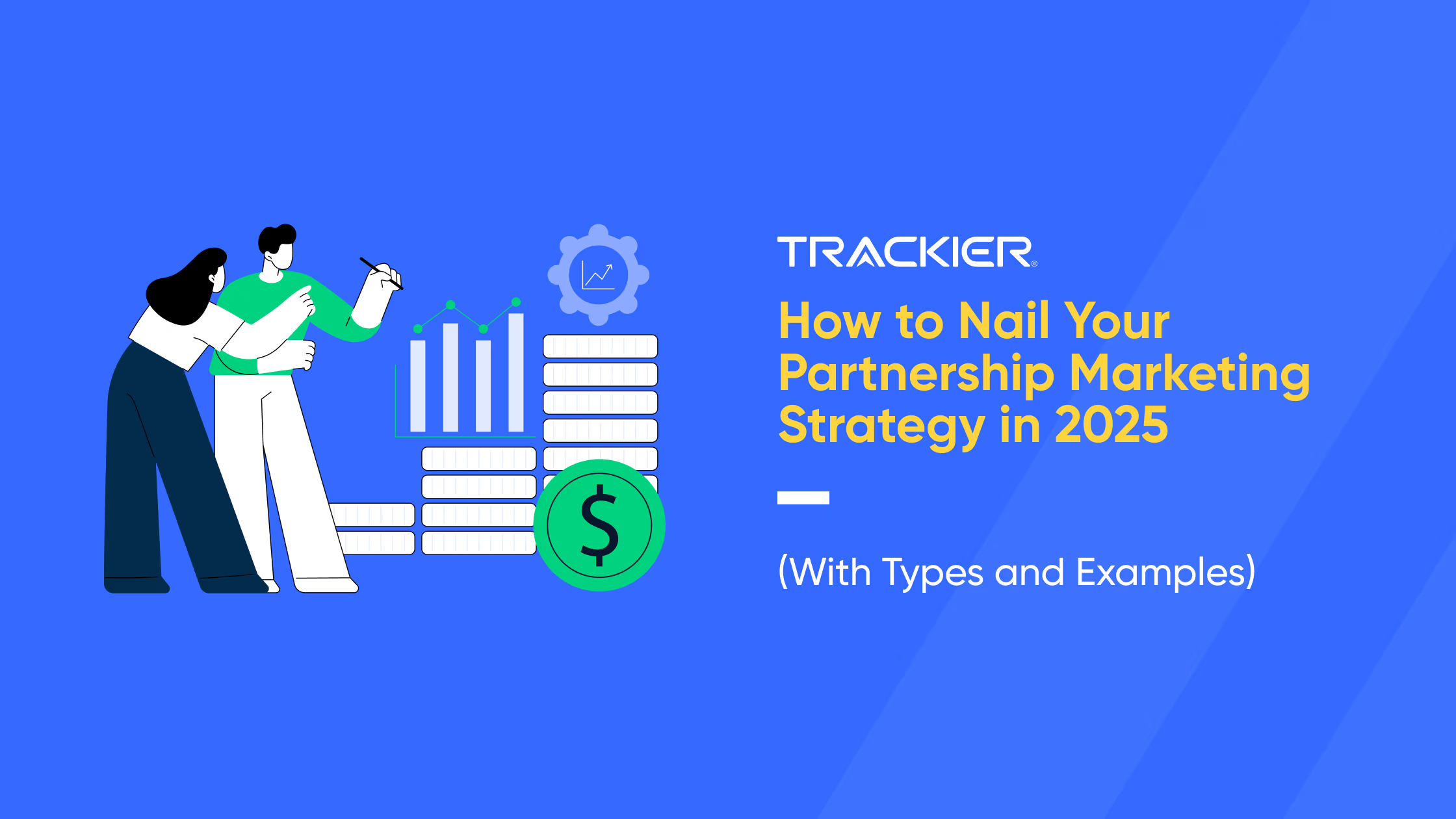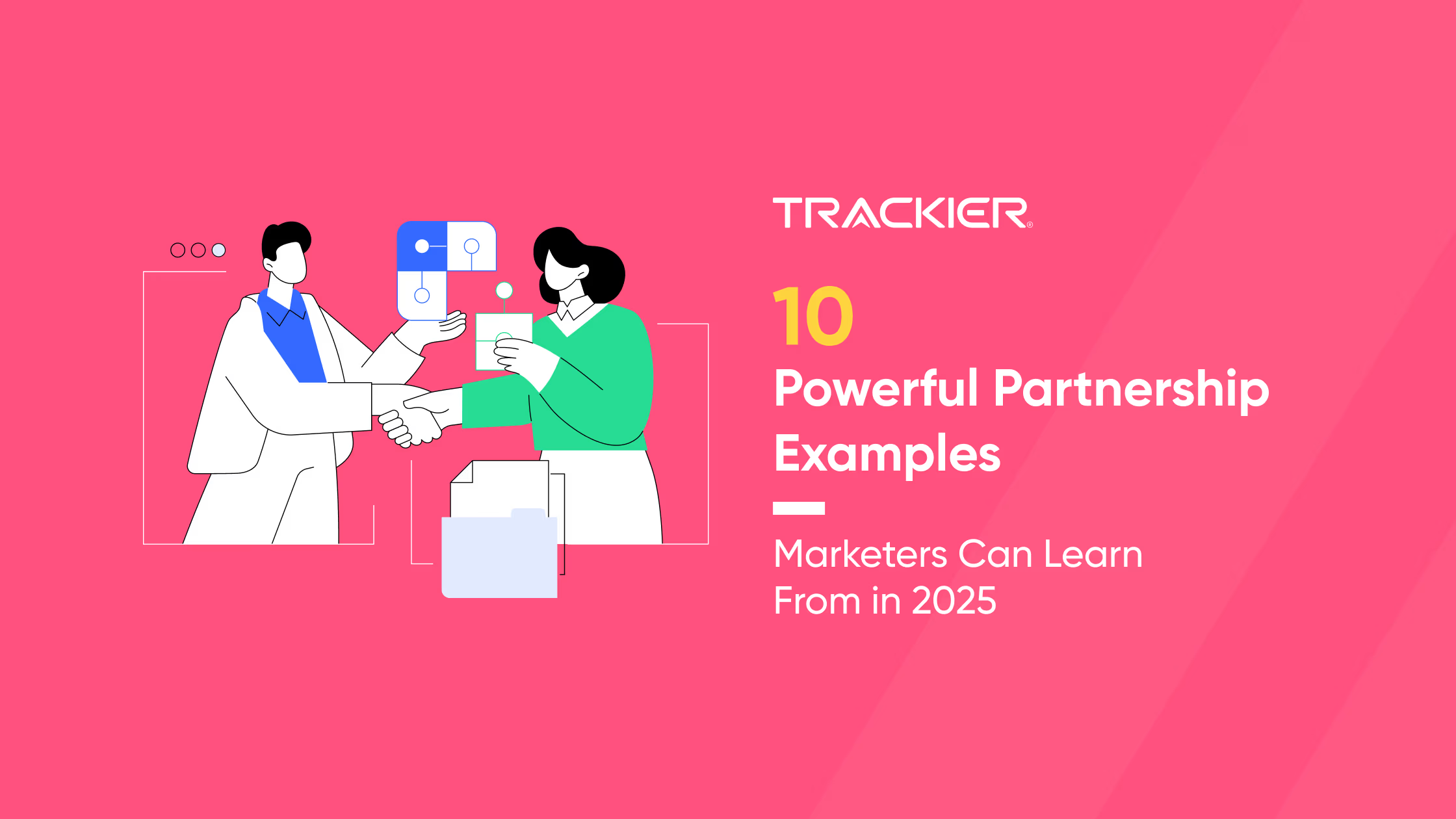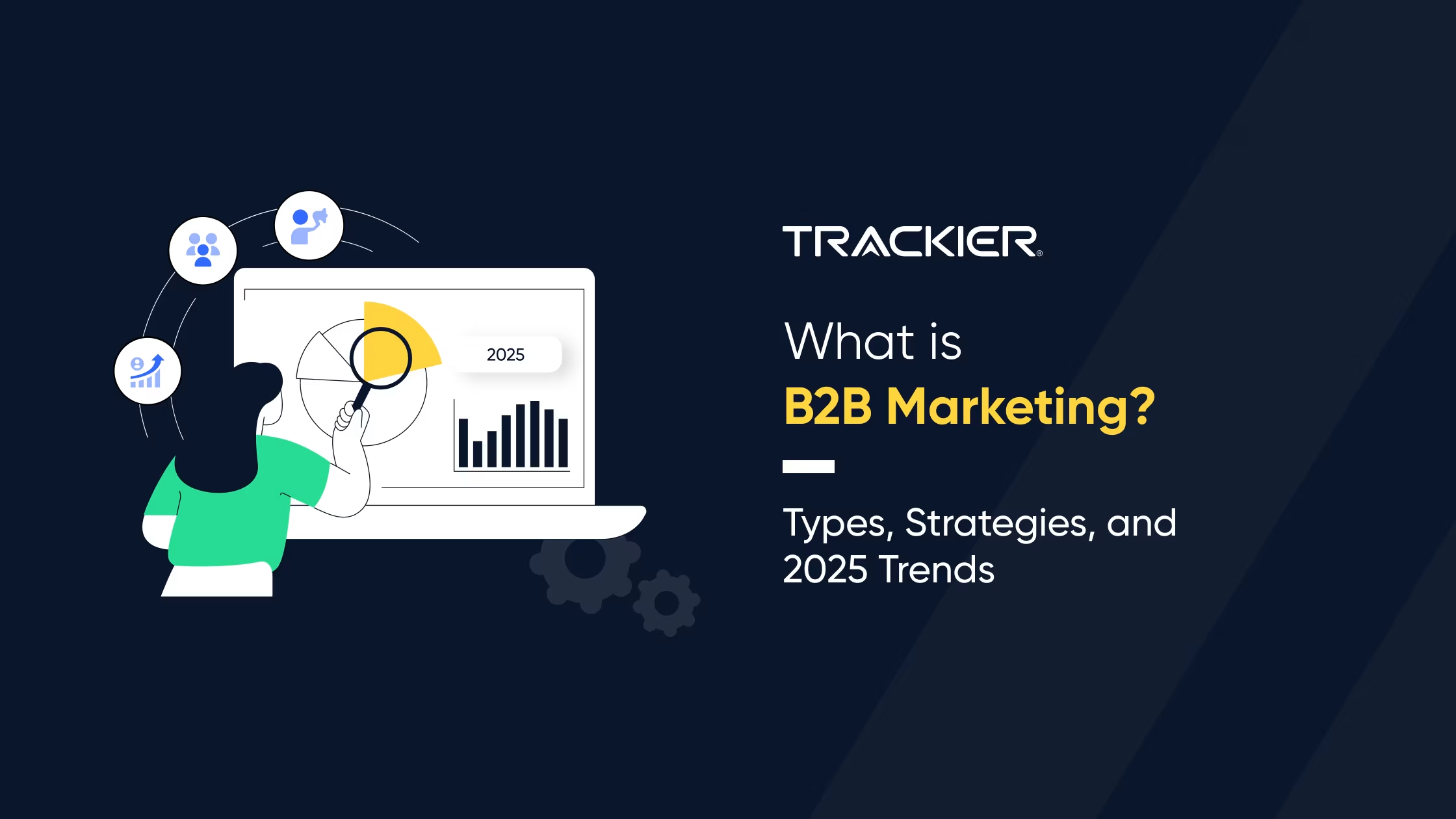Affiliate marketing has evolved so much!
The days of throwing links into the wild and hoping for clicks are so far in the past.
In 2025, what actually does matter, is understanding the types of affiliate partners that can actually work for your brand.
Choosing the right affiliate partnerships can determine whether your program thrives or flatlines, it doesn’t matter if you’re a B2B marketer at a SaaS startup, a pro in a performance agency, or managing user acquisition for an enterprise brand, the one golden rule of picking the right partner applies to all.
And if you’re looking to optimize your entire affiliate flow, Trackier’s affiliate marketing software might just be your new favourite tool.
Let’s dive into what makes each type of affiliate partner unique, how to find them, and where they actually shine.
How to Make Affiliate Links: Benefits and Examples
Making affiliate links isn’t just about adding a tracking code anymore. It’s about ensuring the link is relevant, trackable, and delivers a value exchange both ways. Here’s the quick breakdown:
- Relevance: The link must feel native to the context it’s placed in
- Trust: partners and affiliates should disclose their affiliation to maintain transparency
- Tracking: Use a platform that provides real-time analytics (like Trackier)
Example: A fintech blogger embeds your SaaS product in a list of “Top Tools for Compliance Teams.” The link leads to a tracked landing page with a special offer. Now you’re talking conversions.
A Guide to 15 Types of Affiliate Partners That Actually Help
Here’s a list. Not alphabetically. Not by size. But in terms of the actual types of affiliate partners that are getting marketers real results.
1. Content Creators
Content creators can include bloggers, niche media publishers, and long-form content creators who build audiences around a specific interest.
These types of affiliate partners are great for:
- SEO traffic
- Evergreen backlinks
- Trust-based recommendations
2. Review Sites
Review platforms like G2, TrustRadius, and FinancesOnline help potential buyers evaluate products side by side.
These sites hold serious weight in B2B buyer journeys, especially in tech and SaaS industries. Listings on these platforms, coupled with affiliate links, drive high-intent traffic that’s already close to converting.
3. Coupon & Cashback Sites
Coupon and cashback partners attract deal-seeking customers through discounts, cash rewards, or points.
They’re powerful during seasonal promotions or flash campaigns. While attribution can skew towards last-click, they often bring high-volume conversions, especially for ecommerce, subscription services, and mobile offers.
4. Mobile Ad Networks
These partners and affiliates specialise in performance-based user acquisition via mobile channels.
They work especially well when paired with Trackier’s mVAS integrations, as they allow seamless direct-to-carrier billing. If you’re targeting telco, gaming, or streaming audiences, these networks offer scalable, geo-targeted growth.
5. Influencers & Micro-Influencers
These types of affiliate partners are individuals with a loyal, engaged following on platforms like Instagram, YouTube, or TikTok.
While big influencers offer reach, micro-influencers often outperform on conversion metrics thanks to deeper audience trust. Ideal for product launches or niche campaigns, especially when authenticity matters.
6. Communities and Forums
Reddit mods, Discord admins, Telegram channel owners, these are modern-day community gatekeepers.
If you’re promoting tech affiliate programs or gaming tools, these communities offer contextual, peer-recommended placements that outperform traditional ads. Just remember to approach with value, not a sales pitch.
7. Comparison Engines
These algorithm-driven platforms automate the side-by-side comparison process.
From pricing and features to reviews and ratings, they scrape multiple sources to provide a real-time comparison. Often monetised via affiliate APIs, they are valuable for commoditised product categories like software, travel, or insurance.
8. Loyalty Programs
Partners that offer points, cashback, or rewards in exchange for purchases can drive substantial volume.
Brands like Rakuten or Honey run massive loyalty ecosystems. For brands looking to boost conversions, especially in competitive categories, these partners and affiliates offer compelling incentives for buyers.
9. Email Marketers
These affiliates operate segmented, topic-specific newsletters.
With strong open rates and curated audiences, they’re ideal for B2B affiliate marketing partnerships. When the email content aligns with the user’s interests, like fintech tools for finance leads, the performance can be stellar.
10. YouTube Product Reviewers
Creators who post in-depth, long-form reviews or tutorials on YouTube build strong trust and influence purchase decisions.
This format works especially well for SaaS, no-code tools, and martech platforms. Their content is also evergreen and searchable, which means compounding returns.
11. Tech Bloggers & Niche Publishers
These publishers write for highly focused tech-savvy audiences.
If you’re in SaaS, cybersecurity, developer tools, or AI, this is your playground. These partners often combine affiliate links with thought leadership, making them useful for both awareness and conversion.
12. Tool Roundup Aggregators
These types of affiliate partners publish “best of” lists, such as “Top 5 CRM Tools” or “10 Alternatives to Slack.”
They attract mid-funnel buyers comparing options and typically monetise through affiliate placements. Ideal for increasing product visibility within competitive categories.
13. B2B Networks
Platforms that operate within professional or industry-specific B2B communities often have built-in credibility.
They might run newsletters, member portals, or partner directories. These are perfect for relationship affiliate programs that prioritise longevity over volume.
14. Programmatic Affiliates
These partners and affiliates use real-time bidding (RTB), display inventory, and programmatic placements to run affiliate ads.
High velocity, highly scalable. Best suited for ecommerce, subscription apps, or products with wide appeal and clear CTAs.
15. Onsite Partners
These are partners that embed affiliate placements within their own digital products or SaaS tools.
For example, an invoicing platform might recommend Trackier as an upsell or suggested tool. These placements feel organic and contextually relevant, often driving higher conversion rates.

Understanding Types of Partners and Affiliates
Let’s be real. Not all partners and affiliates are made equal.
A community forum might outperform a high-DA review site if your product serves a tightly defined audience. Similarly, a cashback site might flood your funnel but tank your LTV.
The trick is mapping partner type to customer behavior.
Here’s how that looks:
For SaaS brands:
Prioritise tech bloggers, comparison engines, and email marketers. These partners help educate long-cycle buyers, often with content that ranks well over time. Combine them with YouTube reviewers for visual demos and evergreen lead gen.
For gaming apps and mobile-first subscriptions:
Go for mobile ad networks, programmatic affiliates, and cashback partners. Pair these with Trackier’s mVAS setup to unlock direct-to-carrier billing in markets like Southeast Asia, LATAM, and the Middle East.
For B2B fintech or enterprise software:
You’ll want high-trust environments, review platforms, niche B2B networks, and LinkedIn newsletter partners. These types of affiliate partners perform well when decision-makers seek validation and side-by-side comparison before committing.
For ecommerce and high-velocity products:
Coupon publishers, loyalty programs, and tool roundups tend to work best. They drive urgency, support retargeting, and dominate last-click attribution. Just make sure your payouts reflect that reality.
For regional expansion:
Local forums, regional influencers, and publisher networks help build credibility fast.
In India? Find Telegram or ShareChat creators.
In Brazil? Look into cashback marketplaces and WhatsApp-driven campaigns.
Pro tip: Inside Trackier, you can create smart attribution rules to weigh top-of-funnel partners and affiliates more generously. This ensures those who drive discovery (but not necessarily the final click) still get rewarded, maximising long-term partner retention.
Understanding commissions is key to scaling without waste. Here are some of the most-used models in 2025:
- CPL (Cost per Lead): Common in SaaS, especially for demo bookings
- CPA (Cost per Action): Paid when the user takes a defined step (purchase, subscription)
- Rev Share: Often used in fintech or recurring SaaS models
- Hybrid: A mix of CPA + Rev Share for long-tail growth

How to Find Affiliate Partners (That Aren’t Just Cold Pitches)
Finding quality affiliate partners is less about mass outreach and more about building intentional relationships. Skip the spray-and-pray cold pitches.
Here’s how top marketers are discovering (and converting) high-performing affiliates in 2025:
Start with your existing ecosystem
Your customers, agencies, consultants, and even tool integration partners may already be referring business informally. With the right incentive structure, they can be converted into formal affiliates.
Use partner discovery tools:
Platforms like Trackier offer a vetted affiliate marketplace where you can filter by industry, geography, and performance history. These partners and affiliates are often pre-qualified, saving you outreach time.
Tap into your category’s influencers:
Identify authors of high-ranking product reviews, comparison blogs, or listicles in your domain. These creators already have traffic and trust, reaching out with a tailored affiliate pitch that matches their tone and audience.
Attend curated events:
Conferences like Affiliate World, SaaStr, and niche B2B meetups are ideal to build trust with top-tier publishers. Relationships built in-person still outperform email blasts.
Leverage affiliate networks strategically:
While not all networks offer high-touch relationships, they can be great for scalable discovery. Just make sure you vet performance history and traffic quality before onboarding at scale.
Check partner overlap with competitors:
Use SEO tools like Ahrefs or SimilarWeb to reverse-engineer affiliate traffic sources for rival products. Many of those partners may be open to promoting an alternative.
Stay active in niche communities:
Places like Product Hunt, Indie Hackers, or even B2B Subreddits host founders and micro-influencers who can become valuable niche affiliates.
Why Trackier Built mVAS for Affiliate Partners
If you work in telco, gaming, or VOD, you already know this. Direct Carrier Billing (DCB) is making a comeback.
We saw mVAS (Mobile Value-Added Services) becoming a huge lever for growth, especially in APAC, LATAM, and parts of MENA. So we built an entire stack around it.
Trackier’s mVAS suite allows you to:
- Track DCB campaigns in real-time
- Monitor churn and LTV curves for every partner
- Automate fraud filters for volatile regions
- Connect with mobile ad networks directly
In short, we made affiliate marketing ready for mobile-first audiences.
Looking for a more detailed take on what is mVAS? Visit our blog today!
Choose Smart. Scale Fast.
Not all partners and affiliates are created equal. The trick is to align your product, market, and payout strategy with partners who get it.
Start with value. Prioritise trust. Use data to optimize. And yes, use Trackier to make sure your backend doesn’t fall apart under pressure.
FAQs
What are the three main types of affiliates?
The three dominant types of affiliates are:
– Content creators
– Coupon or cashback platforms
– Product review websites
These groups account for a significant share of affiliate conversions across industries.
Content creators drive trust and education, coupon sites drive volume and urgency, and review platforms influence decision-making through comparisons and validation.
What is an example of an affiliate partner?
Take, for instance, a SaaS-focused YouTuber who publishes a tutorial on how to streamline remote team management.
Within the video description, they link to your product’s free trial using a unique referral code. Every sign-up that comes through that code earns them a commission.
That’s affiliate marketing in action: authentic, educational, and performance-driven.
What are the different types of affiliate commissions?
The four most popular models in affiliate marketing are:
Hybrid: Combines upfront payouts with backend earnings for flexibility Each model serves a different purpose depending on funnel stage, risk appetite, and customer journey.
CPL (Cost Per Lead): Great for SaaS trials or demo requests
CPA (Cost Per Action): Common in ecommerce and subscription services
Revenue Share: Ideal for long-term LTV models like fintech or SaaS
What’s the difference between partners and affiliates?
While all affiliates are partners, not all partners qualify as affiliates.
Affiliates usually operate with trackable links and performance-based payouts.
On the other hand, broader partners could include resellers, tech integrators, media buyers, or even co-marketing collaborators. They might work on rev-share, fixed-fee, or bundled deals without using affiliate links at all.
Want more?
Subscribe on LinkedInSign up for our weekly newsletter to get tips like these delivered, straight to your feed.



